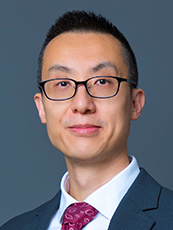Speakers

Dr. Lut-Ming CHAN
Hong Kong
Dr. Chan Lut Ming is a specialist in Internal Medicine and Palliative Medicine. Currently he works as Associate Consultant in Medicine at Haven of Hope Hospital, which is an extended care hospital with 600 inpatient beds, providing geriatric, rehabilitative, respiratory and palliative care services. His duty also involves providing outpatient care and consultative service of cancer and non-cancer patients (including end-staged renal failure, advanced COPD, advanced heart failure and motor neuron disease) under palliative care. He is enthusiastic in teaching medical students and he is Honorary Clinical Assistant Professor of the Department of Medicine, LKS Faculty of Medicine, the University of Hong Kong, as well as Clinical Assistant Professor (honorary) of the Department of Oncology, the Chinese University of Hong Kong. He also serves as a member of Training Subcommittee of Central Committee on Palliative Care, Hospital Authority. He writes poems, novels, literary critics and has published three poem collections.
Complex pain problems related to terminal illness can occur in any settings and across different specialties. Sub-optimal management of pain can induce unbearable suffering to patient and their families. One of the concept in palliative care is to dissect the pain into physical, psycho-social and spiritual aspects, and the team including nurses, social workers and allied health can help the patient in a trans-disciplinary approach to achieving healing of a person.
Longitudinal follow up of the patient and the families allow the team to better understand the unique characteristic of a person and ones' needs. A case will be shared to illustrate the service provided by palliative care team which the patient was first known to the palliative care consultative service in an acute ward, later supported by out-patient care and home care team.
Patients with serious illness may gradually deteriorated, intake of medication by oral route may become a problem and intravenous assess is often not possible in dying patients. Continuous subcutaneous infusion (CSCI) of medication would be a good alternative to provide symptoms control. The case illustrated above also utilized CSCI during her end-of-life care to ensure good symptoms control. This technique helps to remove one of the numerous barriers for patient wish to "die-at-home".